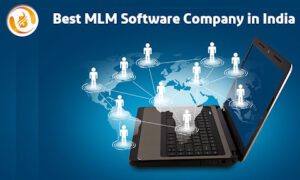EHR pricing can have a significant impact on the efficiency of any software you choose for your practice. Choosing the right EHR software and features drives long-term success by enhancing workflows, saving time, and supporting operational costs. However, the wrong choice of EHR features can reduce efficiency, both in terms of operations and overhead costs.
Further, when it comes to EHR solutions , scalability matters as much as cost and features. Balancing features and costs prevent expensive, sometimes cumbersome, upgrades or system swaps later. Therefore, making the right choice from the start is important.
Take a closer look at EHR pricing models and features to watch to help you choose a solution that grows with you.
Understanding EHR Pricing Models
Subscription-Based (SaaS) Pricing
With a SaaS EHR model, you pay monthly or annual fees for subscription-based EHRs, which makes them an affordable EHR Software for any size practices. This model scales easily as you add staff or patients without huge upfront costs. Plus, updates roll out automatically.
Per-Provider or Per-Patient Pricing
Per-provider or per-patient pricing with EHR software fits various practice sizes and offers flexibility if you have fluctuating needs. Smaller clinics often choose per provider, while larger practices often lean toward per patient. While beneficial in terms of flexibility, costs can climb fast if your practice expands unexpectedly.
On-Premise vs. Cloud-Based EHR Costs
On-premise EHRs tend to require infrastructure investments, like servers and IT staff, upfront. Cloud-based options cut those up-front costs because infrastructure maintenance is left to vendors. For this reason, cloud-based EHR pricing can be more suitable for a small or growing practice, or a practice that has changing needs.
Hidden Costs to Watch for as a Customer
Training, data migration, integrations, and support fees are all costs to watch for with EHRs. You may have room in the budget for the software, but these extras inflate the total quickly. So, plan and do your research to avoid expense surprises down the road.
Must-Have Features in a Scalable EHR Solution
When considering EHR features, it can be easy to get overwhelmed. Some systems can have such a robust collection of options and add-ons that it is easy to overlook the fundamentals. For most practices, certain features are absolute must-haves. A few of the best EHR features to look for in a scalable solution.
Customizable Workflows
Customizable workflows adapt to your specialty and practice size effortlessly. You can tweak processes to fit, whether you’re a solo doctor or a big clinic. Plus, this flexibility boosts efficiency as you grow.
Telehealth Integration
EHR telehealth integration allows you to offer virtual care seamlessly. Essentially, patient health data is automatically accessible alongside telehealth processes, which reduces administrative burden and improves efficiency. Moreover, telehealth integration expands your reach without extra overhead.
E-Prescribing (eRx) and Medication Management
E-prescribing and medication management boost patient safety and streamline refills. You can send prescriptions electronically, which means fewer medication errors and time saved. Additionally, eRx and medication management keep your practice running smoothly and compliant.
Billing and Revenue Cycle Management
Billing and revenue cycle management use medical billing and Electronic Health Record software integration to streamline claims. You speed up payments with automated tracking and reduce the probability of claim denials. Thus, your cash flow may be enhanced, even if your practice grows.
Interoperability and Third-Party Integrations
Interoperability connects your EHR to labs, pharmacies, and other systems. For providers, this delivers the capability to share data quickly, which can lead to improving care and coordination across platforms.
Patient Engagement Tools
Patient engagement tools like portals and secure messaging empower your patients but also benefit your practice. Patients can schedule appointments and communicate more easily, and these features save a substantial amount of time for administrative staff.
Data Security and Compliance
Data security and compliance lock down patient info with HIPAA governance and encryption. You avoid breaches and fines, which also means keeping trust intact with your patients as you grow and saving money. Furthermore, this will mean the EHR complies with ONC’s rigorous standards for functionality, security, and data sharing.
How to Choose a Scalable EHR Solution
As you choose the best EHR pricing model and features for your practice:
- Assess Your Practice’s Growth Potential – Think about what the future of your practice may look like.
- Evaluate the Flexibility in Pricing Plans – Consider how your EHR needs may change down the road.
- Look at User-Friendliness and Training Required – Assess what your team needs with EHR deployment and the time they have to commit.
- Learn about Vendor Reputation and Support Quality – Do some research into various vendors, evaluating things like reliable customer service and technical support availability.
Final Checklist Before Choosing an EHR
Does the EHR pricing fit your budget and pricing model preference?
You need an EHR that aligns with your budget and preferred pricing model. Subscription plans may be suitable, but per-provider costs can add up fast. So, confirming the EHR ROI (Return on Investment) for clinics is a worthy investment is critical.
Does it include essential features for your practice’s needs?
Essential features drive your practice’s success, like e-prescribing or telehealth. You want tools matching your specialty and patient load every time. Otherwise, you’ll struggle with gaps in functionality.
Can the EHR integrate with existing tools and future expansions?
Integration with current tools and probable future practice changes is important. Seamless connections to labs or billing systems, for instance, will save time every day. Plus, scalability ensures your EHR adapts as your practice changes or expands.
Is the EHR vendor reputable with a strong level of customer support?
A reputable vendor with solid support keeps your EHR running smoothly at times when things go wrong. When you have issues with an EHR, you rely on quick fixes and updates from support. Otherwise, both your practice and patients could be negatively affected.
Closing Thoughts on EHR Pricing, Features, and Success
Choosing an EHR shapes your practice’s future, from costs to operational support and overall time efficiency. Choosing the right software boosts workflows, saves time, and scales with growth. Additionally, different pricing models like SaaS and per-provider play a role in overall cost efficiency.
Features matter too—telehealth, e-prescribing, and medical billing integration, for example. These tools streamline operations for providers but also support patient satisfaction. Plus, scalability ensures your EHR grows with you without causing disruptions or excessive costs.
At PrognoCIS, we know the right EHR drives success, not headaches, but we also know making a decision can be tough. So, we’re here to help you balance cost and features for a long-term win with your EHR system. Ready to find your fit? Request a PrognoCIS demo or consultation today to compare EHR options.



































